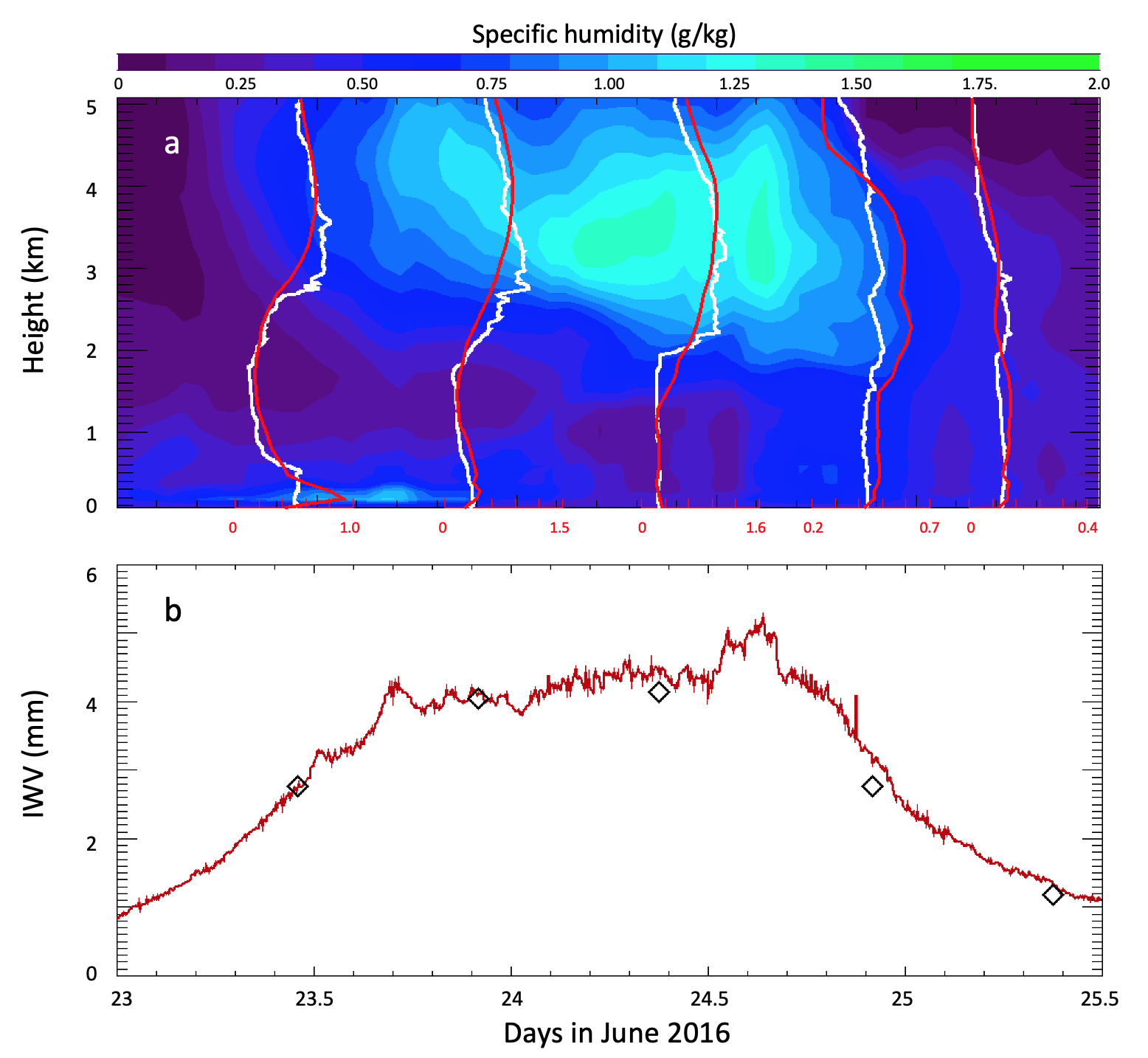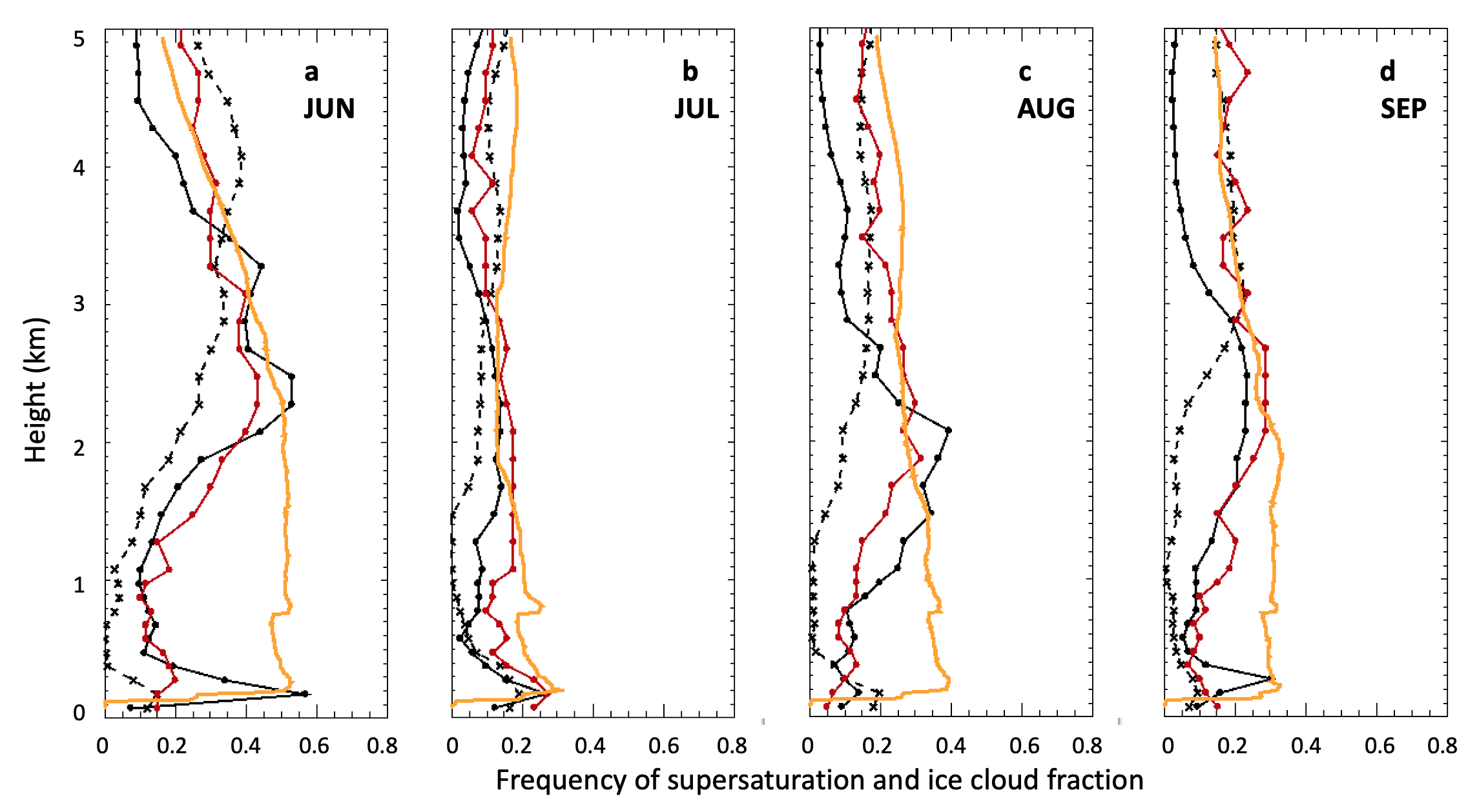Humidity and ice supersaturation profiles over West Antarctica
Submitter:
Cadeddu, Maria Paola — Argonne National Laboratory
Ghate, Virendra Prakash — Argonne National Laboratory
Area of research:
Atmospheric Thermodynamics and Vertical Structures
Journal Reference:
Science
Antarctic water vapor, although extremely small in magnitude, is gaining attention as an important factor in the surface radiation budget and for the modeling of boundary-layer dynamics. Unlike in mid-latitudes, the Antarctic troposphere is characterized by the frequent presence of ice supersaturation. Accurate knowledge of relative humidity, as a predictor of the occurrence of ice nucleation, is therefore important to evaluate models’ schemes of ice nucleation processes. In this work vertical profiles of specific humidity and relative humidity over ice are derived every half hour during the ARM West Antarctica Radiation Experiment (AWARE) in 2016-2017. The derived profiles constitute an improvement over the European Center for Medium Range Weather Forecast (ECMWF) profiles and supplement the radiosondes soundings launched twice a day. The occurrence and location of supersaturated layers are identified and found to be associated with the presence of ice clouds.
Impact
The study of Antarctic climate is often challenged by the difficulties of deploying and maintaining complex instrumentation in the field. This study shows that humidity profiles derived every 30 minutes from ground-based remote sensors capture daily variability of humidity in the low-to-mid troposphere during the Antarctic winter, spring, and summer, presenting the possibility to study remote regions where radiosonde soundings are not available. The remote sensors realistically capture the presence and magnitude of supersaturated regions, thereby creating the opportunity to advance the knowledge of cloud processes in high-latitude climate.
Summary
Owing to the important role that Antarctica plays in the Earth’s climate system, the U.S. Department of Energy (DOE) and U.S. Antarctic Program (USAP) deployed the second Atmospheric Radiation Measurement (ARM) Mobile Facility (AMF2) during the ARM West Antarctica Radiation Experiment (AWARE) in 2016-2017. The mobile facility included many active and passive remote sensors, including two microwave radiometers. The first radiometer was a two-channel microwave radiometer (MWR)vthat detects atmospheric emissions at 23.8 and 31.4 GHz. The second radiometer was a 15-channel G-band Vapor radiometer profiler (GVRP) that operates between 170 and 183.3 GHz, in a spectral region dominated by emissions due to water vapor and liquid water.
The high sensitivity of this radiometer to water vapor and cloud liquid water allowed researchers to derive humidity profiles in the troposphere every half hour between 0 and 5 km during the Antarctic winter, spring, and summer. The derived profiles provided an improvement over the ECMWF profiles. Throughout the observation period, specific humidity ranged from less than 0.5 g/kg during the winter at McMurdo to about 4 g/kg during summer at the WAIS. Profiles of relative humidity over ice at McMurdo provide useful information on the presence of supersaturated layers. The radiometric retrievals showed that during the campaign, supersaturation occurred mainly between 1 and 3 km except for the month of December where it occurred above 3 km. The supersaturated layers occurred with a frequency of less than 20% except at the heights of maximum occurrence where they had a frequency of 30-40%. The supersaturation varied between 100% and 140% with a small number of cases exceeding 140%. The occurrence of supersaturated layers showed little monthly variation. When examined in conjunction with a cloud mask, the occurrence of supersaturated regions was highly correlated with the occurrence of ice clouds. Ice-only clouds occurred most frequently when the RHice was near to or exceeded 100%.



